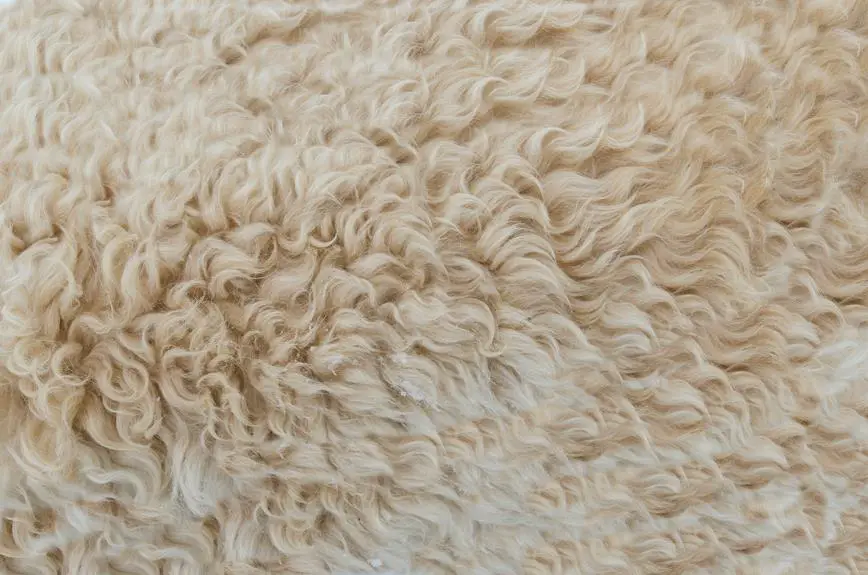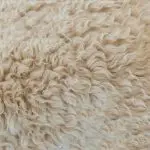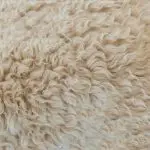If you're torn between the cozy warmth of sherpa and the luxurious feel of faux fur, understanding their differences can help you make the best choice for your fabric needs. Both fabrics offer unique characteristics that cater to different preferences and purposes.
In this comparison, we'll delve into the distinct features of sherpa and faux fur, considering aspects such as durability, maintenance, comfort, and suitability for various projects.
By mastering the nuances between these fabric options, you can confidently select the ideal material for your next sewing or crafting endeavor.
Key Takeaways
- Sherpa fabric is known for its softness, warmth, and comfort, mimicking the look and feel of real sheep's wool.
- Faux fur offers a wide range of styles, colors, and patterns, and is considered an ethical alternative to real fur.
- Both Sherpa and faux fur fabrics are durable and resilient, although the durability of faux fur depends on its quality.
- Sherpa fabric is suitable for blankets and outerwear, while both fabrics offer excellent durability and versatility for various applications.
Characteristics of Sherpa Fabric
Sherpa fabric is known for its softness, warmth, and ability to provide a cozy and comfortable feel when worn. The insulation properties of Sherpa fabric make it an excellent choice for cold weather clothing. The texture and feel of Sherpa fabric are distinctive, with a soft, plush pile that mimics the look and feel of real sheep's wool. This unique texture not only adds to the aesthetic appeal of the fabric but also enhances its comfort and warmth. The insulation properties of Sherpa fabric are due to the air pockets created by the texture of the fabric, which trap warm air close to the body, providing excellent thermal regulation.
When you wear Sherpa fabric, you'll experience a luxurious softness that's gentle against the skin, making it a popular choice for blankets, outerwear, and cold-weather accessories. The plush texture adds an extra layer of comfort, making it perfect for cozying up on chilly days. Additionally, the insulation properties of Sherpa fabric ensure that you stay warm and toasty even in the coldest of climates. Whether you're lounging at home or braving the winter weather, Sherpa fabric offers both style and functionality.
Characteristics of Faux Fur Fabric
If you prefer a fabric that replicates the look and feel of real animal fur, faux fur offers a luxurious and stylish alternative to Sherpa fabric. Faux fur has become increasingly popular for its remarkable resemblance to real fur and its versatility in various applications.
Here are some key characteristics of faux fur fabric:
- Faux fur texture: Faux fur is often soft, plush, and velvety, providing a luxurious tactile experience that resembles genuine animal fur.
- Faux fur variety: This fabric comes in a wide range of styles, colors, and patterns, allowing you to choose from an array of options to suit your personal taste and fashion preferences.
- Durability and resilience: Faux fur is known for its durability, making it a long-lasting option for clothing, accessories, and home decor.
- Easy maintenance: Unlike real fur, faux fur is generally easy to care for, often being machine washable or requiring simple spot cleaning.
- Ethical and animal-friendly: For those who prefer not to use real fur, faux fur provides a cruelty-free alternative without compromising on style and elegance.
These characteristics make faux fur an attractive choice for those seeking the luxurious look and feel of real animal fur without the ethical concerns.
Durability Comparison
When comparing the durability of faux fur and Sherpa fabric, consider the wear and tear that each material can withstand in various applications.
Faux fur, known for its softness and luxurious feel, is often used in clothing, home decor, and accessories. However, its durability may vary depending on the quality of the material.
Higher quality faux fur tends to be more durable and can withstand regular use without matting or shedding excessively.
On the other hand, Sherpa fabric, with its fluffy texture and warmth, is also durable and suitable for various applications. Sherpa fabric is often used in blankets, jackets, and outerwear, where its durability is put to the test in harsher conditions.
When evaluating the durability of these fabrics, it's essential to consider factors such as fabric performance under different stressors, ease of maintenance, and longevity.
Both faux fur and Sherpa fabric can offer excellent durability depending on the quality and intended use, making them versatile choices for various applications.
Maintenance Requirements
When it comes to maintaining your fabric, it's important to consider the cleaning methods for both Sherpa and faux fur. Understanding the durability and longevity of each material will also help you make an informed decision about which one suits your maintenance preferences.
Let's explore the maintenance requirements for Sherpa and faux fur to help you determine the best option for your fabric needs.
Cleaning Methods for Each
To maintain both sherpa and faux fur fabric, regular brushing is essential to prevent matting and keep the fibers looking their best. When it comes to cleaning these fabrics, here are some best practices to ensure gentle care and effective maintenance:
- Spot Cleaning: Use a mild detergent and a soft cloth to gently dab at stains, avoiding harsh scrubbing.
- Brushing: Regularly use a soft-bristled brush to remove surface dirt and maintain the fabric's texture.
- Professional Cleaning: For tough stains or overall cleaning, consider taking your sherpa or faux fur items to a professional cleaner.
- Air Drying: If washing is necessary, air dry the fabric instead of using a dryer to prevent damage to the fibers.
- Storage: Store sherpa and faux fur items in a cool, dry place to prevent mold and mildew.
Durability and Longevity
For maintaining the durability and longevity of sherpa and faux fur fabric, consistent care and proper storage are essential.
When comparing durability, both sherpa and faux fur are long-lasting materials if properly maintained. Faux fur tends to be more resistant to wear and tear, making it a durable option for long-term use. However, sherpa fabric, while not as resilient as faux fur, can still provide good longevity with the right care.
To ensure fabric longevity, it's crucial to follow the care instructions provided by the manufacturer. Regularly brushing and spot cleaning can help maintain the fabric's appearance and texture. Additionally, proper storage in a cool, dry place away from direct sunlight can prevent deterioration and extend the lifespan of both sherpa and faux fur fabrics.
Comfort and Insulation
For a warm, cozy feel, Sherpa fabric provides excellent comfort and insulation. When it comes to comfort and insulation, Sherpa fabric has several advantages over faux fur:
- Softness: Sherpa fabric is known for its soft, plush texture, providing a luxurious feel against the skin.
- Warmth: The dense pile of Sherpa fabric creates air pockets that trap heat, offering exceptional warmth in cold weather.
- Breathability: Despite its insulating properties, Sherpa fabric remains breathable, preventing overheating and discomfort.
- Insulation: Sherpa fabric effectively retains body heat, making it ideal for cozy blankets, jackets, and cold-weather accessories.
- Coziness: The thick, fuzzy texture of Sherpa fabric adds a layer of coziness, perfect for snuggling up on chilly days.
With its combination of softness, warmth, breathability, insulation, and coziness, Sherpa fabric excels in providing a comfortable and insulated experience.
Whether you're looking for a cozy blanket to curl up with or a warm jacket to brave the winter chill, Sherpa fabric is an excellent choice for achieving both comfort and insulation.
Suitability for Different Projects
Selecting between Sherpa and faux fur for your sewing or crafting projects involves considering their specific attributes and suitability for different applications.
When deciding which fabric to use for your project, it's essential to take into account the unique characteristics of Sherpa and faux fur.
Sherpa is an excellent choice for cozy winter wear, such as jackets, vests, and hats. Its insulating properties make it ideal for outerwear and cold-weather accessories.
Additionally, Sherpa works well for creating soft blankets, plush pillows, and comfortable throws, adding warmth and comfort to your home decor.
On the other hand, faux fur is a versatile option for creating luxurious garments, including coats, vests, and stylish accessories like scarves and earmuffs. It can also add a touch of elegance to costume design and theatrical outfits.
Moreover, faux fur is perfect for crafting statement pieces such as handbags, clutches, and boots, elevating your fashion accessories.
Consider the specific requirements of your project to determine whether Sherpa or faux fur is the best fit for your fabric-based endeavors.
Environmental Impact and Sustainability
When considering the environmental impact and sustainability of fabric choices, it's important to evaluate the material sourcing and its potential long-term ecological effects.
Understanding where the materials come from and how their production affects the environment can help you make an informed decision.
Considering these factors will contribute to a more sustainable approach to fabric selection.
Material Sourcing and Impact
When sourcing materials for fabric, consider the environmental impact and sustainability of Sherpa and faux fur. Both materials have implications for ecosystems and ethical sourcing. Here are some key factors to consider:
- Ecosystem Impact: Evaluate how the production of Sherpa and faux fur affects natural habitats and wildlife.
- Sustainable Sourcing: Look for information on whether the materials are sourced and manufactured in an ethical and sustainable manner.
- Carbon Footprint: Consider the energy and resources required to produce Sherpa and faux fur, and how this contributes to their environmental impact.
- Waste Management: Explore how waste and byproducts from the production of these materials are managed and whether they pose environmental risks.
- Long-Term Impact: Consider the long-term effects of using Sherpa and faux fur, including their biodegradability and potential for recycling.
Understanding these aspects can help you make informed decisions when choosing between Sherpa and faux fur for fabric.
Long-Term Ecological Effects
To understand the long-term ecological effects of Sherpa and faux fur on the environment and sustainability, consider their impact on natural habitats and wildlife.
Sherpa fabric, made from natural fibers like wool, can have a significant ecological impact due to the grazing practices associated with wool production.
On the other hand, faux fur, typically made from synthetic materials, contributes to environmental issues such as microplastic pollution.
Both materials pose challenges to conservation efforts, as they can result in habitat destruction and harm to wildlife.
To address these concerns, ongoing conservation efforts are focusing on sustainable wool production and developing eco-friendly alternatives to traditional faux fur.
Frequently Asked Questions
Can Sherpa Fabric Be Used for Making Outdoor Gear Like Jackets and Boots?
Yes, sherpa fabric is an excellent choice for making outdoor gear like jackets and boots. It provides warmth, comfort, and durability, making it ideal for outdoor activities. Its versatility and insulation properties make it a great option.
Is Faux Fur Fabric Suitable for Making Pet Accessories Like Beds and Toys?
When it comes to pet bedding, faux fur can be a great choice due to its durability and softness. For toys, ensure the material is safe for pets, as some faux fur fabrics may not be suitable.
What Are the Best Ways to Clean and Maintain Sherpa Fabric to Ensure Longevity?
To keep sherpa fabric in top shape, follow these tips: for stain removal, blot gently with mild detergent; for washing, use cold water and skip fabric softener; for storage, keep it in a cool, dry place.
How Does the Environmental Impact of Sherpa Fabric Compare to Faux Fur Fabric?
When considering the environmental impact of sherpa fabric versus faux fur, it's essential to examine the production process of both materials. The production of sherpa fabric often involves a blend of natural and synthetic fibers, while faux fur is typically made from synthetic materials, which can have different environmental implications.
Are There Any Special Considerations for Using Faux Fur Fabric in Children's Clothing and Accessories?
When it comes to using faux fur fabric in children's clothing and accessories, safety is a top priority. Ensure that the faux fur is non-toxic and hypoallergenic. Additionally, consider durability to withstand frequent washing and rough play.
- How Does Ring Spun Cotton Affect Garment Fit and Shape Retention? - August 13, 2024
- What Are the Challenges in Producing Ring Spun Cotton? - August 13, 2024
- Is Ring Spun Cotton Suitable for Plus-Size Clothing? - August 13, 2024







